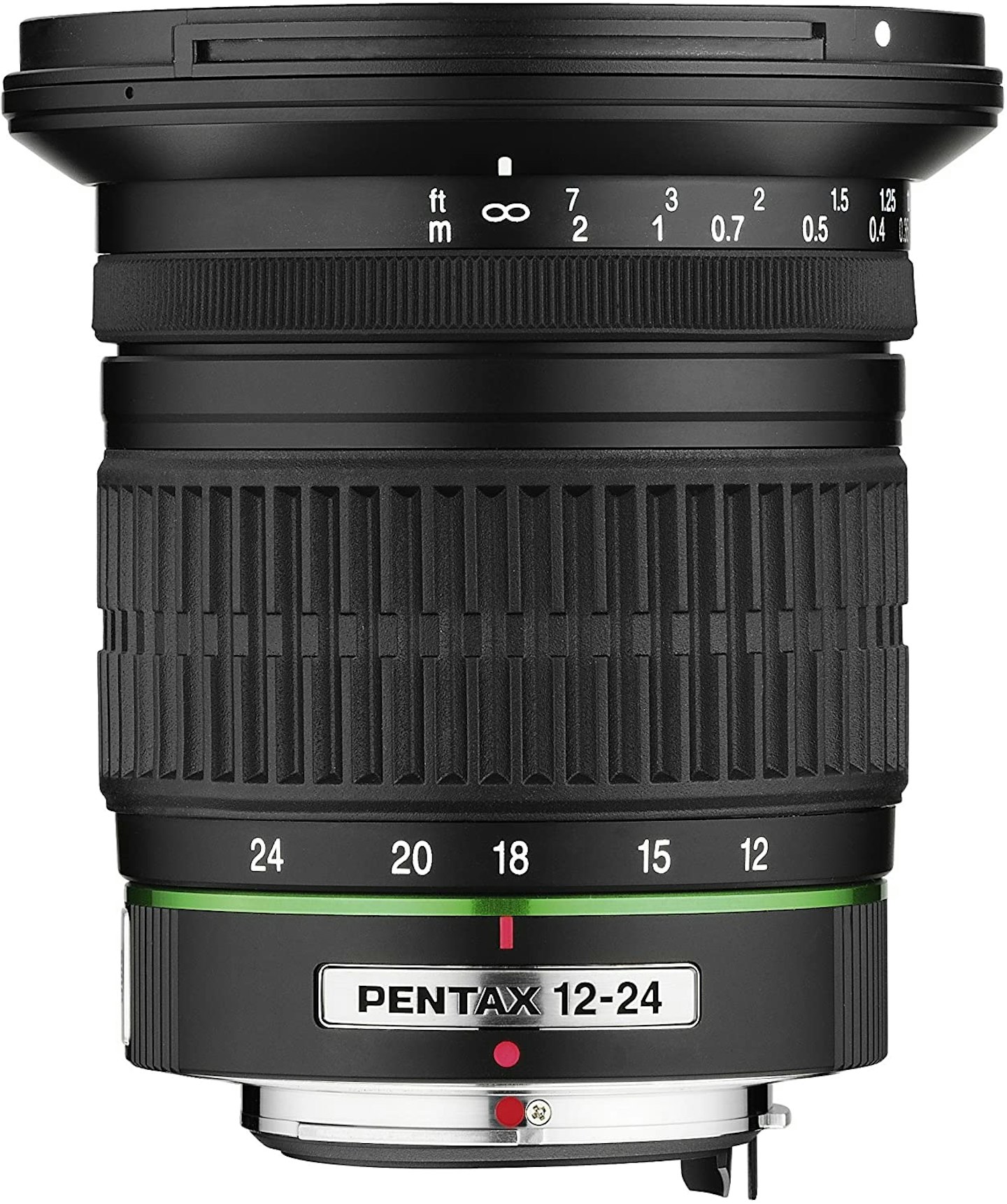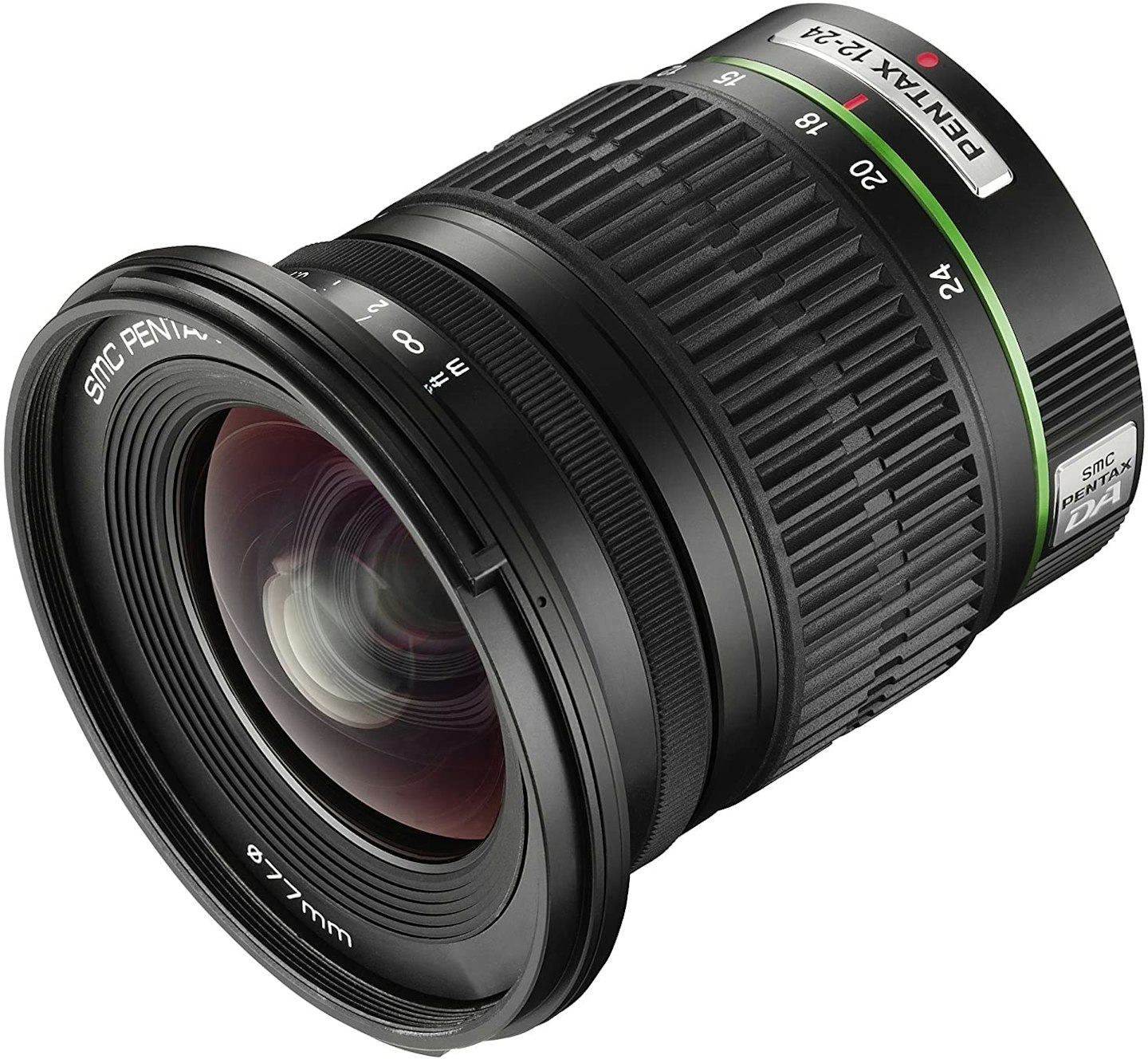Verdict: This lightweight lens has a constant f/4 aperture that provides good image quality. It is quite expensive compared to it’s rivals and it has no AF motor so focusing is noisy but it operates at a good speed.
The DA 12-24mm f/4 ED (IF) is Pentax’s only dedicated wide-angle lens for its APS-C DSLRs, although users of this system also have the choice of the Sigma and Tamron lens’ featured in our test. This lens has a full-frame equivalent focal length of 18-34mm when the 1.5x crop factor has been applied, and features a maximum constant aperture of f/4. Inside the lens there are 2 aspherical elements and 1 ED (Extra-low Dispersion) element to reduce distortion, and the 13 lens elements are arranged in 11 groups.
The 12-24mm has no internal AF motor and so the autofocus generates a moderate degree of noise, but still operates with satisfying speed. There’s a Quick Shift focusing system that allows for instant manual override. As the lens achieves focus internally the front element of the lens doesn’t rotate, so it’s possible to use polariser filters that match the 77mm filter thread.
Image quality
The 12-24mm performed well. With the zoom set to 12mm detail is very sharp across the entire frame, at all aperture settings. When zoomed in to 24mm, the centre remains sharp but the corners become a little more fuzzy. The lens was at its sharpest at f/11. We did detect a fair amount of chromatic aberration and some barrel distortion in test images – more pronounced at the wide end of the zoom – and some vignetting with the aperture wide open.
Spec
Mounts: Pentax
Min aperture: f/22
Elements: 13/11
Filter size: 77mm
DxL: 84x88mm
Weight: 430g
Subscribe to the What’s The Best Newsletter to keep up to date with more of the latest reviews and recommendations from Kirk and the rest of the What’s The Best team.
Kirk Schwarz is a tech-addicted photographer with over a decade's experience; Kirk’s used to putting new gear through extreme field testing. He's previously written for Practical Photography.
.jpeg?ar=16%3A9&fit=crop&crop=top&auto=format&w=1440&q=80)

